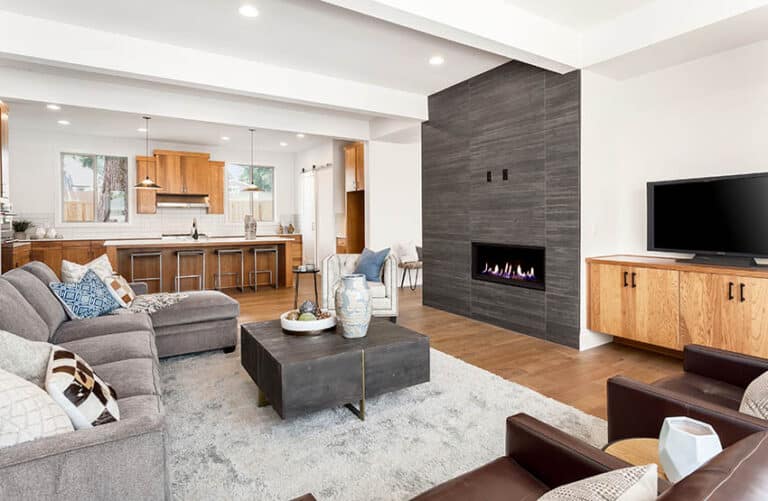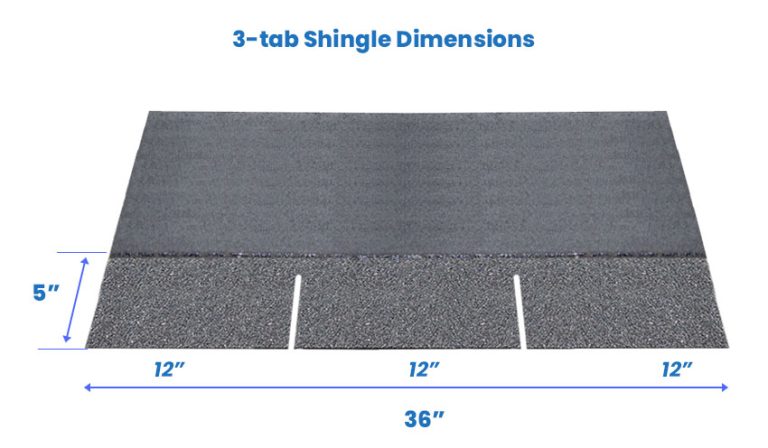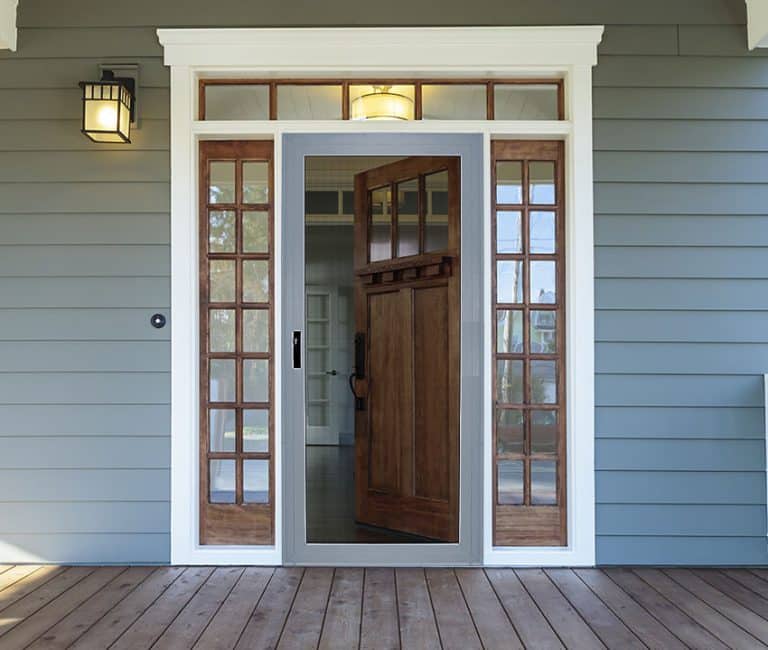French Door Sizes (Interior & Exterior Door Dimensions)
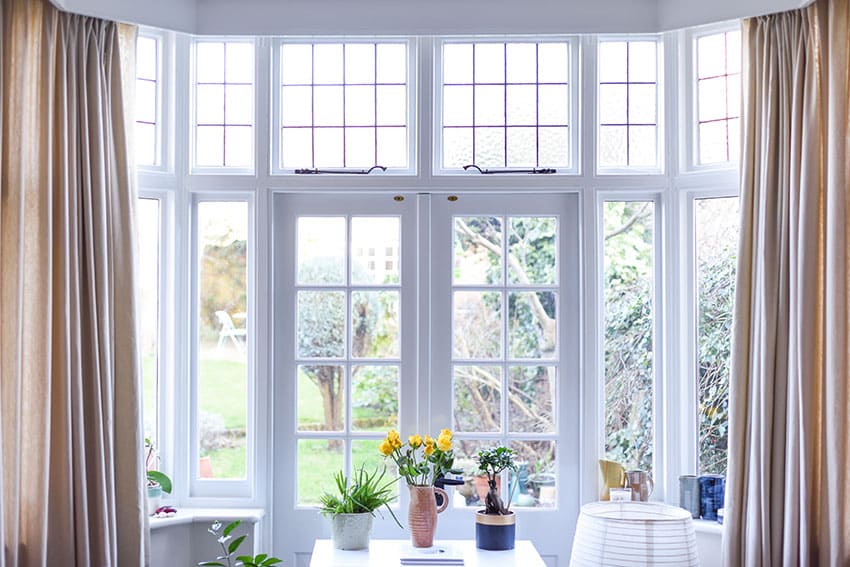
Incorporating French doors into your open layout will undoubtedly enhance the look and ambiance of your house. Installing French doors is also an ideal way to boost a tremendous amount of natural lighting inside your house. French doors can give several benefits in terms of security, functionality, energy efficiency, design, and convenience. However, you might ask, what is the size of a standard French door, and what are the different types available? Let us discuss these questions in this article.
Standard French Door Size
| French Door Component | Standard Dimensions |
|---|---|
| Width (per panel) | 24 inches (2 feet) to 36 inches (3 feet) |
| Total Width (both panels) | 48 inches (4 feet) to 72 inches (6 feet) |
| Height | 80 inches (6 feet 8 inches), with some up to 96 inches (8 feet) |
| Thickness (interior) | 1 3/8 inches |
| Thickness (exterior) | 1 3/4 inches |
The size of the French door will typically follow the size of the opening. This means the designer modifies some sizes of doors to fit the opening specifications needed. However, there are still some standard sizes available.
The size of standard French doors is customarily 80 inches in height and 72 inches in width for both doors. However, they are also available with measurements of around 5 to 8 feet in width.
These doors are versatile and can be used for room entryways of different sizes. In several cases, the sizes will depend on what the manufacturer has set. Generally, most French door dimensions are between 3 to 6 feet wide for each panel. They are also mostly available with an additional measurement of 2 inches.
Exterior French Door Sizes
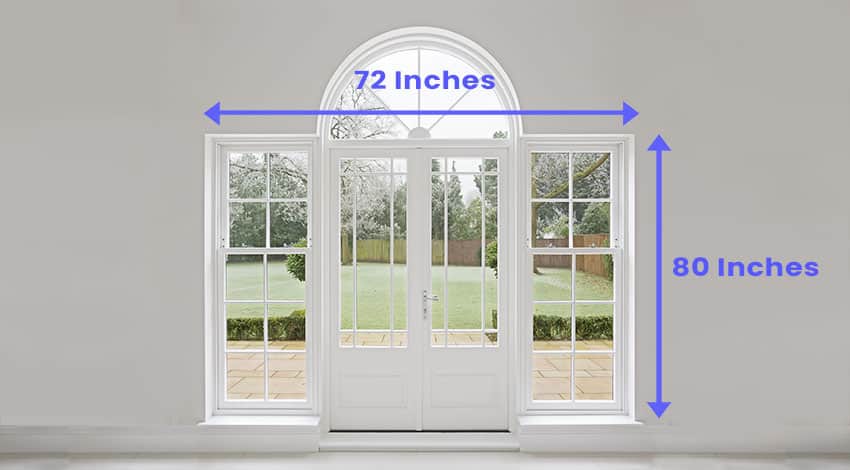
The size of an exterior French door may vary. It mostly depends on its manufacturer. It will be based on the size of the door frames. But usually, the height of this standard exterior door is either 6.7 feet, 7 feet, or 8 feet. As mentioned, the average size is 80” high by 72” wide.
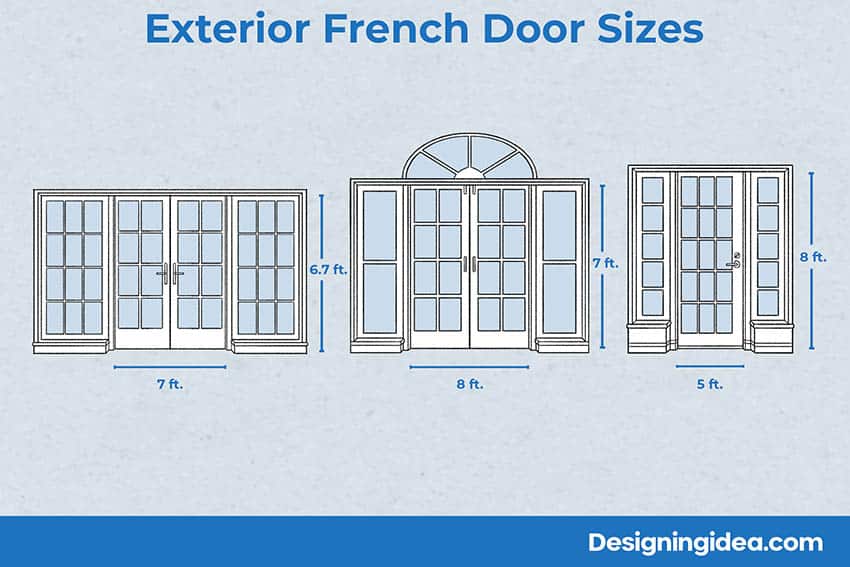
Exterior French doors are usually 5 to 8 feet wide. The overall size may increase by a few inches at a time. Because this style, with its many panes of glass, is mainly created to transfer more natural light into your indoor space, they customarily function as exterior doors. Some huge houses with massive door openings need massive exterior door sizes. If this is your case, you won’t have to worry, as you can select exterior products that measure up to 10 feet in width.
Interior French Door Sizes
Standard interior French doors measure 80 inches high by 36 inches wide per door.
Interior French doors side by side usually have a width of 36 inches. This size will create an overall opening that’s 72 inches wide. The standard door thickness is 1 ¾”.
These products aren’t only for exterior uses but can also be installed in small, tight spaces and function as interior doors. Many homeowners can’t resist including them in their interior space because of their attractive appearance.
However, if you’re thinking about installing a French door in your interior space, you need to remember that it’s also necessary to create sufficient room for their opening so that they can be swung freely.
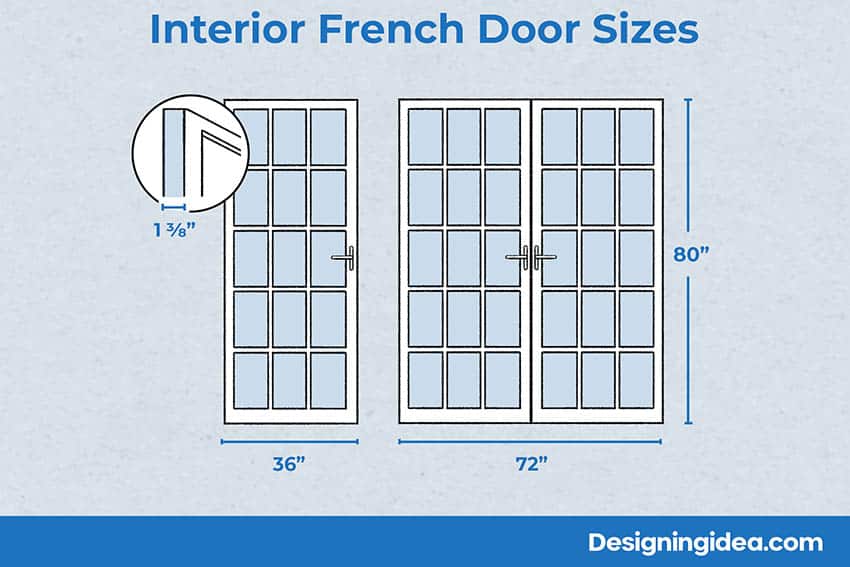
Some manufacturers create individual doors that measure from 24” to 42” wide. Read more about standard interior door size here.
Door Rough Opening Size
The size of the French door’s rough opening must be precisely ascertained so it will be installed correctly and without hassle. Moreover, this ensures that the doors will be opened and closed fittingly once built and installed. A correct rough opening size also ensures there won’t be uneven surfaces and gaps in the design.
To accurately determine a French door’s rough opening, you must measure each door’s size. To get the overall width, you’ll need to multiply each door’s width by 2 and then add 2 inches.
For example, if each door has a measurement of 30 inches in width, the width of the rough opening must be 62 inches. Regarding the rough opening’s height, you’ll need to add 2 and a half inches to the door’s height. As an example, if the height of your door is 82 inches, then its rough opening height must be 84 and a half.
How to Measure For French Doors

To measure your French doors, what you need to do first is to remove the molding from the door frame’s interior. It can’t be possible to precisely measure the door space’s rough opening if the molding is in the area. After that, you must start measuring the opening’s width and height. Start measuring from the threshold to the header’s bottom to get the height accurately. To get the actual width, measure from one side of the opening to the other.
It is also recommended that you get the measurement of the depth of the jamb. Furthermore, you’ll have to identify if your opening is outswing or inswing. You must also stand outside the door to determine if it opens using your right or left hand. Read this article to learn more about how to measure a door.
Do French Doors Open In Or Out?
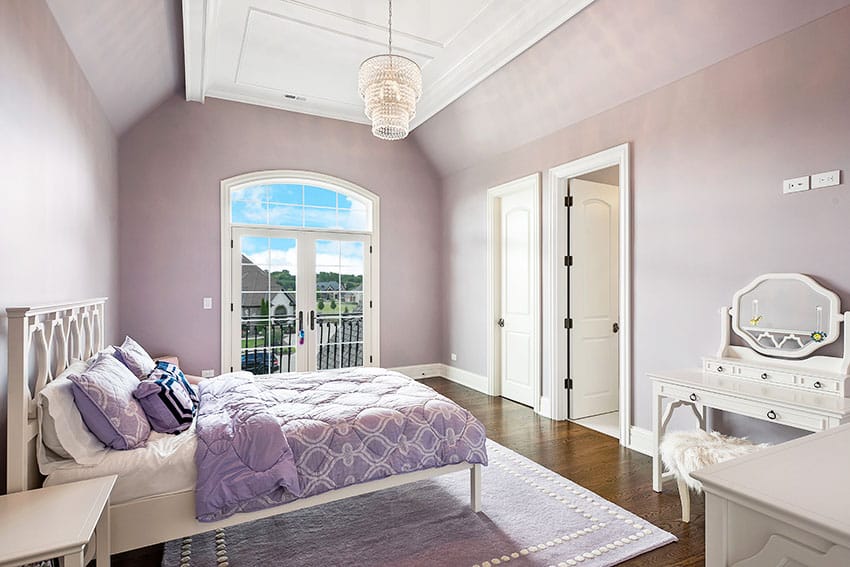
There are only two selections when choosing which way your French door opens, either in or out. However, these two choices have their pros and cons. For example, if you want to replace your old doors, you’ll also have to install a product that can open similarly. To modify the door’s opening direction, you must also change its frame and casing.
Moreover, this style needs an extensive space away from blockages. You must also leave sufficient space to stand conveniently and comfortably while pulling or shutting the door. Many room layouts only provide enough space for them to be opened in full range in a single direction.
Doors that are swinging outward can withstand several types of weather. If it’s the rainy season, this type of door will prevent water from leaking. Even so, outswing doors can be very difficult to open if the snow outside is thick and massive.
If you live in a place or country that’s snowing too much, inswing doors are a much better option. In terms of safety, outswing doors can be less effective against thieves. Because the hinges are outside, thieves can detach the entire hinge. So if you’re using an outswing door for your exterior space, putting security pins into the hinges is advisable. For another related article, see our French door designs guide here.


